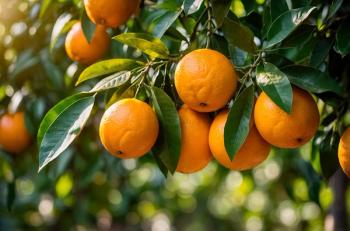
- Nutritional Outlook Vol. 17 No. 4
- Volume 17
- Issue 4
Blood Pressure and Dietary Supplements
Where nutraceuticals stand in the fight
It almost sounds like a form of torture, but renal denervation-a treatment in which a clinician steers an electrode-tipped catheter into the arteries of the kidney to kill the nerve endings with two-minute zaps of radiofrequency energy-looked, until recently, like a promising treatment for patients with resistant hypertension. But then came a study (Bhatt DL et al.) published this April in The New England Journal of Medicine showing no significant difference in blood pressure outcomes between patients who received the treatment and those who underwent a “sham” procedure.
The news likely disappointed physicians desperate for a new arrow to add to their antihypertensive quiver. But in sending them and the medical community back to the drawing board, it may have done us all a favor-for when it comes to dealing with hypertension, the drawing board isn’t such a bad place to be. Because a multitude of variables-from heredity to obesity-contributes to hypertension, any approach to battling hypertension needs to be just as multivariate.
In a time of rising healthcare costs and rising hypertension rates, it’s worth remembering that good old-fashioned “lifestyle” factors, including the use of supplements, can take the pressure off our healthcare spending and our vascular systems.
Taking a Toll
Simply put, hypertension, or high blood pressure, is a measure of how much blood the heart pumps and the resistance the arteries exert against its flow. “The more blood your heart pumps and the narrower your arteries, the higher your blood pressure,” explains Harry B. Rice, PhD, vice president, regulatory and scientific affairs, Global Organization for EPA and DHA Omega-3s (GOED; Salt Lake City).
We express blood pressure as a ratio of the systolic pressure (measured in mmHg) generated when the heart beats to the diastolic pressure generated as it rests between beats. Roughly speaking, a “safe” blood pressure might be somewhere around 115/75 mmHg, whereas the generally accepted cutoff for “high” blood pressure is 140/90 mmHg or above.
As Sanni Raju, PhD, RPh, CEO and chairman, Natreon Inc. (New Brunswick, NJ), points out, “Many doctors do not prescribe any medications until they see blood pressure readings of 140/90 mmHg.” Alas, doctors are seeing more of those readings these days. In fact, current blood pressure statistics, as reported by the Centers for Disease Control and Prevention (CDC), are what Rice calls “eye opening.”
To wit, one in every three adults-fully 67 million Americans-has high blood pressure, while roughly the same percentage has pre-hypertension: not quite high enough to qualify as “high,” but still high enough to merit attention. Of those Americans with high blood pressure, less than half (47%) have their condition under control. No wonder hypertension costs the country some $47.5 billion annually in healthcare services, medications, and lost productivity.
Perhaps more costly, though, are the more serious implications. As Raju notes, “Hypertension can lead to heart disease, coronary artery disease, stroke, aneurysms of the arteries, and peripheral arterial disease and is a cause of chronic kidney disease, ultimately reducing life expectancy.”
With potential consequences that dire, the medical community has tried to learn more about how hypertension arises, and how best to treat it when it does. And as far as Kelley Fitzpatrick, director of health and nutrition, Flax Council of Canada (Winnipeg, MB), is concerned, it’s about time. Hypertension, she believes, “is a disease that we haven’t paid as much attention to from either the pharma or non-pharma side.”
What we do know is that hypertension can be either primary or secondary. Secondary hypertension “is caused by certain conditions affecting the kidneys, heart, endocrine system, arteries, et cetera,” Raju says. It can be associated with adrenal gland tumors, for example, and unlike primary hypertension tends to appear abruptly. The condition “needs medical intervention,” he continues, “and there are many effective pharmaceuticals for its treatment.”
Primary hypertension, also known as essential hypertension, is more common and derives from lack of exercise, a “modern” diet poor in fresh fruits and vegetables, obesity, smoking, excess alcohol consumption, stress, genetics, and an imbalanced intake of minerals like sodium, potassium, magnesium, and calcium. The condition tends to creep up gradually, usually over many years. Considering the number of Americans who don’t exercise or eat healthily, it’s not surprising that this type of hypertension is on the rise.
Hypertension pharmaceuticals may often provide only symptomatic relief and require lifelong use. “In addition,” Raju says, “most of them have side effects.” Indeed, the true cost of pharmaceutical treatment includes far more than just the drugs’ sticker price-although, with the population aging, those costs are only going to rise, Fitzpatrick says.
While it’s largely secondary hypertensive patients that may spiral into what Fitzpatrick calls “this unending cycle of drugs,” even primary hypertensives often, on doctors’ advice, turn to pharmaceuticals. It’s a judicious decision, as “high blood pressure is a serious condition for which a physician should be consulted,” Rice notes.
But pharmaceutical intervention might not be the answer alone. “Lifestyle modifications,” Rice says, “may allow an individual to delay, indefinitely, the use of prescription blood pressure–lowering medication.”
Indeed, by reversing behaviors that lead to primary hypertension in the first place-by exercising more, losing weight, quitting cigarettes, reducing alcohol intake-primary hypertensives may also reverse the upward trend in their blood pressure measures.
Perhaps no other lifestyle change is more effective at this than diet. “An excess of sodium, carbohydrates, saturated fats, trans fats, and sugars are dietary culprits in hypertension,” Raju says. Avoiding these triggers while increasing consumption of fruits, vegetables, beans, fish, whole grains, and other “whole” foods “is essential to preventing or mitigating” the condition.
Yet even diet has its limits. Consider, for example, the issue of sodium. A 2013 Institute of Medicine (IOM) report (Strom BL et al.) concluded that no rational reason exists to reduce sodium consumption below 2,300 mg/day-much higher than the 1,500 mg/day that national dietary guidelines recommend for the prevention of heart attacks and stroke. Further, Raju notes, “A low-sodium diet is important to reducing the risk of hypertension, but the body needs a balanced intake of sodium, potassium, magnesium, and calcium. Thus, one cannot eliminate sodium completely.”
Even setting aside our evolving thinking on sodium, maintaining the sort of gold-star diet that experts recommend as optimal for vascular health takes more work than many of us can afford. “In today’s fast-paced society,” Raju notes, “unfortunately, not many people have time to eat nutritionally balanced fresh foods or exercise regularly.”
And that’s where supplements come in. As Anil Shrikhande, president, Polyphenolics (Madera, CA), says, “Supplements fill the gap of inadequate dietary habits and help maintain normal blood pressure.” Offering the advantages of lower cost compared to pharma, prescription-free access, and consumer appeal, supplements may also produce fewer, if any, side effects and have a general record of safety.
Among the supplements already identified as having a positive effect on blood pressure are resveratrol, vitamin D, anthocyanins, magnesium, Pycnogenol, coQ10, omega-3 fatty acids, acetyl-L-carnitine, and melatonin, Raju says. “Many of these work by blocking the angiotension-converting enzyme-ACE-and improving endothelial function,” he notes. And while we still have a lot to learn about how these nutrients effect their beneficial changes, here’s some of what we do know.
DHA+EPA
These days, it’s hard to find a condition that doesn’t respond positively to the long-chain omega-3 fatty acids DHA and EPA. Hypertension is no exception. In fact, a
The study, which GOED funded, showed the most significant effects among subjects with existing high blood pressure. In these subjects, DHA and EPA produced an average decrease in systolic and diastolic blood pressure of 4.51 and 3.05 mmHg, respectively.
In addition, Rice points out that though nonselective beta-blockers have long been the “first-line treatment” for primary hypertension, “this is changing due to the associated side effects, as well as limited benefits.”
In fact, he notes that a recent Cochrane Review (Wong GWK, Wright JM) on the blood pressure–lowering efficacy of nonselective beta-blockers for primary hypertension reported that these reduce blood pressure by an average of 8 mmHg systolic and 5 mmHg diastolic. “While these results are slightly better than those associated with omega-3s”-4.51 mmHg systolic and 3.05 mmHg diastolic-“omega-3s don’t increase the risk of mortality. [And] while newer blood pressure–lowering drugs decrease blood pressure much better than nonselective beta-blockers, side effects are still an issue,” he says.
Whole Flaxseed
Long-chain DHA and EPA aren’t the only omega-3 fatty acids with blood pressure–lowering potential. A prospective, double-blinded, placebo-controlled randomized trial, the results of which appearance last year in Hypertension (Rodriguez-Leyva et al.), found that whole flaxseed-naturally rich in the short-chain omega-3 alpha-linolenic acid (ALA)-produced “dramatic blood–pressure lowering, both systolic and diastolic, equivalent to, and for some patients better than, some hypertensive drugs,” Fitzpatrick says.
Specifically, 110 patients consumed foods fortified with 30 g of milled flaxseed or placebo daily for six months, at the end of which time systolic blood pressure fell by about 10 mmHg and diastolic by about 7 mmHg in the experimental group compared to placebo. Further, those patients whose systolic blood pressure exceeded 140 mmHg at baseline experienced a significant reduction of 15 mmHg over the trial period.
We don’t really know how the flaxseed exerts these effects, Fitzpatrick says, as the research hasn’t revealed the mechanism of action. It’s likely that flax’s ALA played a part, as may have its fiber and lignan content. But bioactive peptides in flax present another “very interesting area of ongoing inquiry,” she says, as these peptides serve as ACE inhibitors, helping to dilate blood vessels. Whatever the reason, “Researchers agree that it’s probably a synergistic effect of all of the above” that makes flax effective, Fitzpatrick says. Stay tuned.
Grape Seed Extract
A very different seed-that of the grape-could contain the ingredients for yet another supplement with antihypertensive capabilities.
According to Shrikhande, Polyphenolics’s unique grape seed extract, which goes by the name MegaNatural-BP, “opens the door for reducing blood pressure before it gets to the hypertension range.”
How? The product “improves vascular health through an increase in the activity of eNOS”-that is, endothelial nitric oxide synthase, an enzyme that catalyzes the production of nitric oxide, a vasodilator, in the arterial endothelium.
Two double-blinded, placebo-controlled clinical trials, as well as a third study, support the benefits of grape seed extract for blood pressure. The clinical trials were conducted by UC Davis and the Illinois Institute of Technology’s Institute of Food Safety and Health and involved 300-mg daily doses delivered in capsule form over a six-week course (Sivaprakasapillai B et al.; Robinson M et al.). The third study involved a fortified fruit-juice beverage containing 150 mg of the grape seed extract, consumed twice daily for six weeks (Burton-Freeman B et al.). Blood pressure fell to a normal range of 120/80 mmHg and then rose only slightly to 130/89 mmHg-pre-hypertensive-after cessation of active grape seed extract administration. All three studies’ results were significant to p<.005, Shrikhande notes.
The grape seed extract seems to trigger endothelium-dependent relaxation, Shrikhande says. “It is a strong antioxidant and maintains its action in keeping the major blood vessels supple, as in a healthy person.” In very high hypertensives, the ingredient even “acts as a synergizer to maintain normal blood pressure,” he says. Also of note: it may be safer than some pharmaceuticals, with “no complications, side effects, or interactions” reported as adverse events.
Gooseberry and Ashwagandha
Two other nitric oxide inhibitors attracting attention also come from the plant world: Phyllanthus emblica, also known as Indian gooseberry or amla, and Withania somnifera, or ashwagandha. In multiple randomized, double-blind, placebo-controlled clinical studies, Raju says, extracts of both botanicals have improved endothelial function in type 2 diabetics currently on conventional treatments, as well as in subjects with symptoms of metabolic syndrome-in both cases by increasing production of nitric oxide.
Also promising is their ability to decrease levels of C-reactive protein, a biomarker for inflammation, by upwards of 50%. This is “a highly significant reduction that may also contribute to reduced blood pressure, as inflammation is believed to be involved in causing many diseases,” Raju says. The botanicals appear to increase the body’s production of glutathione, a natural antioxidant, and reduce total cholesterol, LDL, and triglyceride levels while increasing levels of HDL, too, “all of which reduces plaque formation in the blood vessels, thus helping reduce blood pressure,” Raju says.
His company sells extracts of Indian gooseberry and ashwagandha under the respective names of Capros and Sensoril, and has put them to the test in multiple double-blind, placebo-controlled crossover clinical trials. In studies of healthy subjects subjected to cold-pressor and mental stress, Raju says, both products have shown an ability to lower radial and aortic systolic and diastolic blood pressure, as well as the augmentation index (AIx), an indirect measure of arterial stiffness. Conversely, they significantly increase the subendocardial viability ratio (SEVR), a measure of the inflow and outflow of oxygen to the heart muscle-something we’d all like to see occur with ease.
Alas, for those with hypertension, it may not be so easy. But they and their medical professionals have lots of tools to improve the situation. As Raju says, “Lifestyle and dietary changes have to be the mainstay for hypertension management, but the more we learn, the more we learn that supplements can help.”
Also read:
and
Articles in this issue
over 11 years ago
Food and Drinks for Bone and Joint Healthover 11 years ago
Omega-3 for Brain Health, Sleep, and Critically Ill Patientsover 11 years ago
Insider Tips on Formulating Functional Foodsover 11 years ago
How to Source Non-GMO Ingredients and Suppliersover 11 years ago
Should Gummy Manufacturers Use Gelatin or Pectin?over 11 years ago
When will FDA release revised NDI draft guidance?over 11 years ago
How to Create Ingredient Monographsover 11 years ago
FDA, Social Media, and Health Claimsover 11 years ago
Tapioca Syrup is a Corn Syrup Replacerover 11 years ago
Minerals in Ancient Grains Are Celiac-FriendlyNewsletter
From ingredient science to consumer trends, get the intel you need to stay competitive in the nutrition space—subscribe now to Nutritional Outlook.





